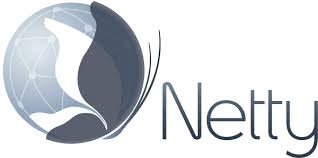1、概览 {#1概览}
在本教程中,我们将学习如何在 Spring Boot 中调用 OpenAI ChatGPT API。我们将创建一个 Spring Boot 应用程序,通过调用 OpenAI ChatGPT API 来生成对提示的回复。
2、OpenAI ChatGPT API {#2openai-chatgpt-api}
在开始本教程之前,让我们先了解一下本教程中将使用的 OpenAI ChatGPT API。我们将调用 create chat completion API 来生成对提示的回复。
2.1、API 参数和认证 {#21api-参数和认证}
让我们来看看 API 强制的请求参数:
-
model- 是我们将向其发送请求的模型版本。该模型有几个版本。我们将使用gpt-3.5-turbo模型,它是 该模型的最新公开版本。 -
messages- 发送给模型的提示。每条 message 都需要两个字段:role和content。role字段指定信息的发送者。在请求中是user,在回复中是assistant。content字段是实际的消息。
API 调用需要认证,我们需要生成一个 OpenAI API key。在调用 API 时在 Authorization 头中设置该 key。
cURL 格式的请求示例如下:
$ curl https://api.openai.com/v1/chat/completions \
-H "Content-Type: application/json" \
-H "Authorization: Bearer $OPENAI_API_KEY" \
-d '{
"model": "gpt-3.5-turbo",
"messages": [{"role": "user", "content": "Hello!"}]
}'
此外,API 还接受一些可选参数来修改响应。
n- 如果我们想增加要生成的响应数,可以指定。默认值为 1。temperature- 控制响应的随机性。默认值为 1(最随机)。max_tokens- 用于限制响应中字词(token)的最大数量。默认值为无穷大,这意味着模型能生成多长,响应就会有多长。一般来说,最好将此值设置为一个合理的数字,以避免生成过长的响应和产生过高的成本。
2.2、API 响应 {#22api-响应}
API 响应将是一个 JSON 对象,其中包含一些元数据和一个 choices 字段。choices 字段是一个对象数组。每个对象都有一个 text 字段,其中包含对提示的回复。
choices 数组中对象的数量等于请求中的可选参数 n。如果未指定 n 参数,choices 数组将只包含一个对象。
下面是一个响示例:
{
"id": "chatcmpl-123",
"object": "chat.completion",
"created": 1677652288,
"choices": [{
"index": 0,
"message": {
"role": "assistant",
"content": "\n\nHello there, how may I assist you today?"
},
"finish_reason": "stop"
}],
"usage": {
"prompt_tokens": 9,
"completion_tokens": 12,
"total_tokens": 21
}
}
响应中的 usage 字段将包含提示和响应中使用的字词数量。这将用于计算 API 调用的成本。
3、示例代码 {#3示例代码}
我们将创建一个使用 OpenAI ChatGPT API 的 Spring Boot 应用程序。为此,我们将创建一个 Spring Boot Rest API,接受提示作为请求参数,将其传递给 OpenAI ChatGPT API,并将响应作为响应体返回。
3.1、依赖 {#31依赖}
首先,让我们创建一个 Spring Boot 项目。添加 spring boot starter web 依赖:
<dependency>
<groupId>org.springframework.boot</groupId>
<artifactId>spring-boot-starter-web</artifactId>
</dependency>
3.2、DTO {#32dto}
接下来,让我们创建一个与 OpenAI ChatGPT API 的请求参数相对应的 DTO:
public class ChatRequest {
private String model;
private List<Message> messages;
private int n;
private double temperature;
public ChatRequest(String model, String prompt) {
this.model = model;
this.messages = new ArrayList<>();
this.messages.add(new Message("user", prompt));
}
// 省略 get/set 方法
}
以及 Message 类:
public class Message {
private String role;
private String content;
// 忽略构造函数、get、set 方法
}
同样,让我们为响应创建一个 DTO:
public class ChatResponse {
private List<Choice> choices;
// 忽略构造函数、get、set 方法
public static class Choice {
private int index;
private Message message;
// 忽略构造函数、get、set 方法
}
}
3.3、Controller {#33controller}
接下来,让我们创建一个 controller,接受提示作为请求参数,并返回响应作为响应体:
@RestController
public class ChatController {
@Qualifier("openaiRestTemplate")
@Autowired
private RestTemplate restTemplate;
@Value("${openai.model}")
private String model;
@Value("${openai.api.url}")
private String apiUrl;
@GetMapping("/chat")
public String chat(@RequestParam String prompt) {
// 创建 request
ChatRequest request = new ChatRequest(model, prompt);
// 调用 API
ChatResponse response = restTemplate.postForObject(apiUrl, request, ChatResponse.class);
if (response == null || response.getChoices() == null || response.getChoices().isEmpty()) {
return "No response";
}
// 返回第一个响应
return response.getChoices().get(0).getMessage().getContent();
}
}
让我们来看看代码的一些重要部分:
- 我们使用
@Qualifier注解注入了一个RestTemplateBean,我们将在下一节创建该 Bean。 - 通过
RestTemplateBean,我们使用postForObject()方法调用了 OpenAI ChatGPT API。postForObject()方法的参数包括 URL、request 对象和响应类 - 最后,我们读取了响应的
choices列表,并返回了第一个回复。
3.4、RestTemplate {#34resttemplate}
接下来,让我们定义一个自定义 RestTemplate Bean,它将使用 OpenAI API key 进行认证:
@Configuration
public class OpenAIRestTemplateConfig {
@Value("${openai.api.key}")
private String openaiApiKey;
@Bean
@Qualifier("openaiRestTemplate")
public RestTemplate openaiRestTemplate() {
RestTemplate restTemplate = new RestTemplate();
restTemplate.getInterceptors().add((request, body, execution) -> {
request.getHeaders().add("Authorization", "Bearer " + openaiApiKey);
return execution.execute(request, body);
});
return restTemplate;
}
}
在这里,我们在基本的 RestTemplate 中添加了一个拦截器,并添加了 Authorization 请求头。
3.5、Properties {#35properties}
最后,让我们在 application.properties 文件中配置 API 的属性:
openai.model=gpt-3.5-turbo
openai.api.url=https://api.openai.com/v1/chat/completions
openai.api.key={你的 API key}
4、运行应用 {#4运行应用}
现在,我们可以运行应用程序,并在浏览器中进行测试:

我们可以看到,应用生成了对提示的响应。请注意,模型生成的回复可能会有所不同。
5、总结 {#5总结}
在本文中,我们学习了 OpenAI ChatGPT API 接口的参数、认证方式和响应信息,以及如何在 Spring Boot 应用中进行调用。
参考:https://www.baeldung.com/spring-boot-chatgpt-api-openai
 51工具盒子
51工具盒子




